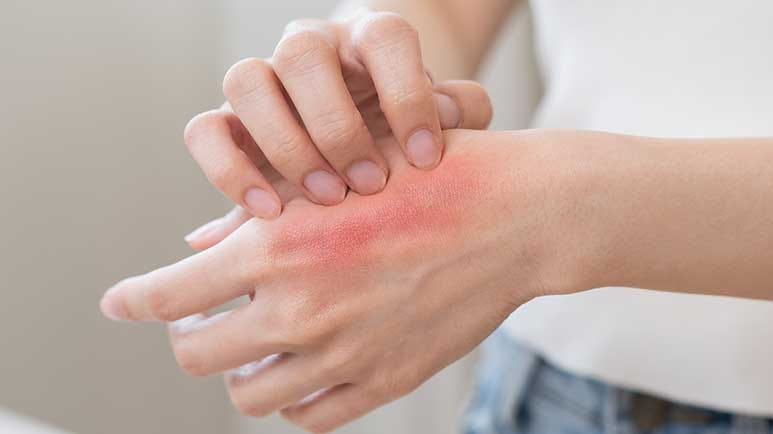Understanding Hand Dermatitis and How to Heal It Naturally
Description
STORY AT-A-GLANCE
Hand dermatitis affects roughly 1 in 10 Americans and turns everyday tasks into painful struggles by causing redness, cracks, and bleeding
Triggers such as soaps, detergents, frequent handwashing, and cold weather strip your skin’s protective barrier and set off recurring flare-ups
Building daily habits like using lukewarm water, moisturizing immediately after washing, and protecting hands with gloves helps stop symptoms from spiraling
Natural remedies including tallow, lanolin, coconut oil, probiotics, and even time in healing climates provide relief and reduce dependence on harsh medications
Avoiding mitochondrial toxins like vegetable oils, endocrine disruptors, and EMFs strengthens your cells’ energy production, giving your skin the resilience to heal

Hand dermatitis is more than just dry skin. It's a stubborn, inflammatory condition that turns your hands into a constant source of discomfort. Redness, itching, cracks, and even bleeding turn the simplest tasks — buttoning a shirt, cooking a meal, or shaking someone's hand — into daily struggles.
Unlike temporary dryness from weather changes, this is a long-term problem that doesn't resolve on its own. The triggers are all around you — soaps, detergents, frequent handwashing, cold air, and even the natural friction of daily routines. Over time, these exposures wear down your skin's barrier, making it fragile and prone to flare-ups that keep coming back.
For many people, their job adds fuel to the fire. Nurses, hairdressers, cleaners, and food workers spend their days with chemicals, gloves, or water, leaving their hands at constant risk. Family history also plays a role, especially if you've ever had asthma, hay fever, or childhood eczema.
Women are affected more often, partly because of ongoing household and caregiving tasks that involve "wet work." This mix of genetics, environment, and lifestyle explains why hand dermatitis is such a persistent challenge and why solutions need to go deeper than just applying lotion.
Hand Dermatitis Is Often Misunderstood and Underestimated
Hand dermatitis is not the same as occasional dry skin but a chronic inflammatory condition with unique triggers and challenges, as noted in an article published by The Hearty Soul.1 It emphasizes that this condition is persistent, requiring targeted medical and lifestyle strategies instead of casual moisturizers that most people reach for when their hands feel dry. Roughly 10% of Americans are impacted, making it one of the most common forms of eczema.2
Symptoms go beyond inconvenience — Mild cases bring redness and itchiness, but severe forms involve bleeding cracks, thickened skin, and even blisters. The constant burning or stinging sensation disrupts daily life, from cooking to shaking hands, and deeply impacts confidence and social comfort.
How hand dermatitis differs from other skin problems — Psoriasis, fungal infections, contact allergies, and lichen planus look similar, but their causes and treatments differ. For example, fungal infections often appear between your fingers, while dermatitis tends to flare on your palms or knuckles. Recognizing these differences is important because treating the wrong condition wastes time and worsens suffering.
Triggers that drive flare-ups — Frequent hand washing, hot water, soaps, detergents, and fragrances are called out as some of the strongest irritants. Cold weather, low humidity, and constant friction strip away protective oils, leaving your skin barrier exposed. This cycle makes flare-ups more frequent and more severe over time.
Hand dermatitis weakens the outer layer of your skin — It functions like a shield that locks in moisture and blocks out harmful irritants, but hand dermatitis weakens this shield. With repeated exposure to irritants, microscopic cracks form, allowing allergens, chemicals, and bacteria to invade. This triggers your immune system, which rushes in with inflammation that creates the redness, swelling, and itching you feel.
Treatment strategies are tied to repairing this damage — Moisturizers and barrier creams restore the protective layer and calm down the overactive immune response. But prevention — avoiding irritants and using protective habits daily — is as important as treatment, since once your skin barrier breaks, the cycle is hard to stop.
Daily Habits Determine How Fast Your Hands Heal
A resource from the National Eczema Association focuses on how hand eczema disrupts both personal comfort and work performance, and it stresses that symptoms aren't contagious but still take a toll on confidence and productivity.3 The article teaches you how to build routines that stop flare-ups before they spiral.
Practical steps at home lead to steady improvement — The National Eczema Association recommends washing with lukewarm — not hot — water, blotting your hands dry instead of rubbing, and moisturizing immediately after washing.
<label class="hide-text" contenteditable="false">Text within this block will maintain its original spacing when published</label>Natural substances like tallow and lanolin, which create a physical barrier on your skin, are preferred over lotions, because creams with higher water content dry out once the water evaporates. You can even apply tallow or lanolin under gloves overnight once flare-ups calm down, giving your skin hours to repair.
Workplace strategies help protect hands during daily exposure — Using natural rubber gloves with cotton liners is one way to block irritants without trapping sweat against your skin. Keeping your own gentle natural cleanser and moisturizer on hand ensures you aren't forced to rely on harsh workplace products. Treating small wounds right away, cleaning gloves after use, and removing rings to stop irritants from building up beneath them is also helpful.
Take precautions for daily tasks that increase risk — When preparing foods like onions, citrus, or peppers, disposable gloves are advised since these foods irritate broken skin.
<label class="hide-text" contenteditable="false">Text within this block will maintain its original spacing when published</label>Even washing your own hair is better






